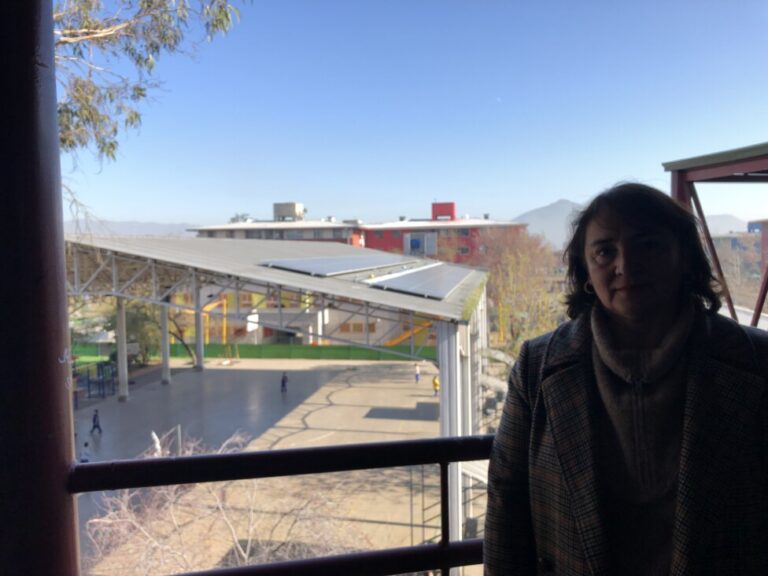Theres no Stopping Renewable Power in Chile, but Community Energy Is Not Taking Off — Global Issues
SANTIAGO, Aug 25 (IPS) – Renewable energies, especially solar and wind power, are growing inexorably in Chile, driven by large companies. But community generation of alternative energy is not taking off, despite a law promoting it.
This long, narrow country of 19.5 million people, rich in solar energy due to the northern Atacama Desert as well as wind thanks to its location between the Pacific Ocean and the Andes Mountains, can accelerate the transition to carbon neutrality, thanks to non-conventional renewable energies (NCRE), which also include hydroelectricity.
On Jul. 28 at 15:00 hours, NCRE broke the record for hourly participation in electricity generation in the country, accounting for 62.3 percent of the total. In 2021, renewable generation accounted for 44.8 percent of all electricity generated, equivalent to 35,892 gigawatt hours (GWh). The total generated that year was 80,116 GWh.
Ana Lía Rojas, executive director of the Chilean Association of Renewable Energies and Storage (Acera), which brings together companies in the field, said that all sectors are making progress in NCRE, especially energy and mining.
Acera estimated that 2022 could end with 13,000 to 14,000 megawatts (MW) of NCRE installed, and in fact there were already more than 12,370 MW in May.
“It’s been a long while since we represented 10 percent, we surpassed 20 percent five years before the date set by law and NCRE are currently above 35 percent of the total. This is a worldwide milestone,” said Rojas.
The target is now 50 percent in the next few years and 70 percent by 2030.
Andrés Díaz, director of the Center for Sustainable Energy and Development at the private Diego Portales University, said “the increase in the share of NCRE in the energy mix, as well as the promotion of storage systems, is fundamental as part of the energy transition we are facing.
“When it comes to meeting the greenhouse gas emission reduction targets resulting from the retirement of coal-fired plants, NCRE must be able to ensure stability in the electric power system,” he told IPS.
Díaz added that this implies providing the capacity to act in the event of possible failures in the transmission systems.

Community generation lacks momentum
These enormous advances in NCRE have not gone hand in hand with the meager development of community generation projects, the distributed or decentralized generation modality focused on self-consumption, mostly solar and collectively owned.
Nicolás O’Ryan, an electrical civil engineer and founding partner of Red Genera, promoted a community NCRE project at the Nueva Zelandia school in the low-income municipality of Independencia, on the northern outskirts of Santiago, by installing solar panels on the roof of the gymnasium.
The initiative is one of the very few promoted using Law 21118, which has been in force for two years, to encourage community electricity generation, also known as citizen generation.
The government’s Energy Sustainability Agency financed 50 percent of the 21,000-dollar investment. A further 3,158 dollars were contributed by Red Genera and the remaining 7,368 dollars were raised by five individuals and a campaign of donations from individuals and companies.
The panels will provide 26,703 kilowatt hours (kWh) per year. Of that total, 29.67 percent will go to the school and 3.52 percent to each of the beneficiaries and investors.
The connection process with Enel Chile, the subsidiary of the Italian transnational electricity group Enel, “is well advanced and only the last step remains – notifying the connection,” O’Ryan told IPS.
The energy will serve the school’s consumption and that of 20 neighboring families. The rest will be managed through a process known locally as Net Billing, the simultaneous measurement of consumption and injection of energy into the grid, which enables any user to self-generate electricity and inject the surplus into the grid, receiving a payment for it.
“By the end of the year I hope we will be ready…we need institutional support to channel the process and resolve difficulties such as the change of administration of the school, that will be transferred to the Local Education Service,” he said.
The school’s principal, Rita Méndez, told IPS that the plant contributes to the education of the 393 children (more than 50 percent of them sons and daughters of immigrants, mostly Venezuelans) who are in the 10 grades in the school in this underprivileged neighborhood, starting in kindergarten.
“The plant helps us to train new citizens in environmental awareness, who help care for the environment and think about how to use clean energy to contribute to the development of life,” she said in an interview at the center.

Pioneer project, five years on
Environmental lawyer Cristian Mires, co-founder of the non-governmental Energía Colectiva, presides over Buin Solar, the first initiative in Chile aimed at generating electricity on a community basis, founded in 2017.
At the time 100 people contributed upwards of 52 dollars each to finance a 10 KW solar panel plant installed at the energy laboratory of the Environment Institute (Idma) in Buin, a town 47 kilometers south of Santiago.
The energy is consumed by the Institute and any surplus is injected into the grid. After 10 years of operation, the plant will be transferred to Idma.
Idma pays about 215 dollars a month for the energy, but without panels the cost would have been twice as much. And it consumes clean energy, an important aspect for an Institute that trains professionals to combat climate change.
“Buin Solar was a pioneer collective project to build the first community plant. It is a successful project that has been a great learning experience and has highlighted the importance of working in associative projects,” said Mires.
He added that “community energy is an urgent solution to address the climate crisis. Buin Solar has social, environmental and economic benefits.”
However, the environmentalist regrets the slow progress made in community generation despite the existence of a legal framework that promotes its development.
“The promotion of community energy is very weak, the democratization of energy is very low,” he argued.
According to Mires, trust must be built to work collectively, but incentives are also needed to overcome the financing barrier and the lack of technical capabilities.
“It would be very important to have instruments for promotion. There is a commitment in the government program of President Gabriel Boric (in power since March), which mentions community generation. We are committed to greater development of this kind of energy generation. Up to now, most of them are individual projects,” he said.

Distributed generation – a minimal contribution to the energy mix
Distributed generation is characterized by small power plants that do not exceed 300 kilowatts (kW), as opposed to centralized generation, with large plants that inject all their production into the transmission grid. And while it has grown in terms of the number of individual actors, their contribution to the system is very small.
Felipe Gallardo, a research engineer at Acera, told IPS that as of June there were 12,365 distributed or decentralized NCRE generation facilities in private hands, totaling 125 MW, equivalent to 0.4 percent of the country’s installed capacity.
“Of the Net Billing installations, over 98 percent involve solar photovoltaic technology,” he said. The largest number are in the central regions of Chile.
Diaz, meanwhile, stressed the importance of increasing the number of individuals who generate energy for their own consumption and contribute their surpluses to the grid.
“Energy self-management allows customers not only to receive income for the energy injected into the grid, but also to avoid contingencies in the national electricity system,” he said.

Obstacles to NCRE
A worrying figure is the explosive growth in the dumping of non-conventional renewable energy, due to difficulties in transporting it because of the lack of transmission lines to large consumption centers.
This year 290 GWh of wind and solar energy could not be used.
“Future development depends on storage systems to ensure the stability of NCRE while we move forward in fulfilling the agreements for the retirement of coal-fired plants,” said Diaz.
Gallardo regretted the impact of dumping energy at the country level “because as long as there are these types of limitations, thermal power plants are necessary, which have a higher variable cost and generate polluting emissions.”
“As renewables expand and, on the other hand, coal-fired plants are retired, it will be necessary to adopt additional measures to increase the levels of maximum NCRE participation,” he said.
The Acera advisor believes that in the medium term, storage systems should be implemented to avoid NCRE dumping.
He also says it will be necessary to continue improving the regulatory framework for storage systems.
© Inter Press Service (2022) — All Rights ReservedOriginal source: Inter Press Service
Check out our Latest News and Follow us at Facebook
Original Source







